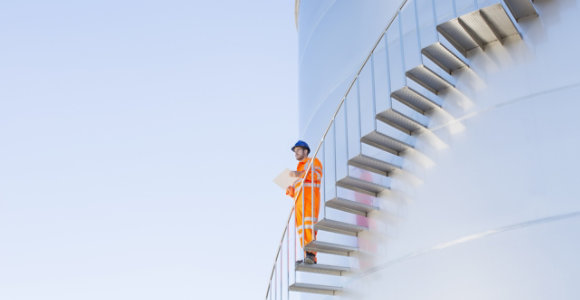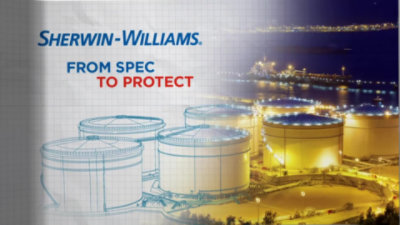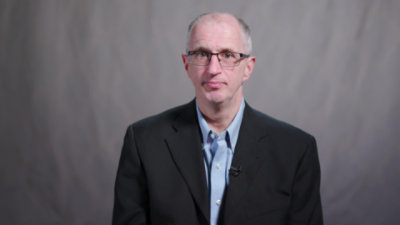
Tanks, Terminals, and Pipeline Coatings and Linings
Extend the total service life of tanks, terminals and pipelines
What are Tanks, Terminals, and Pipeline Coatings & Linings?
"Tanks, Terminals, and Pipeline" describes an integral system within the oil and gas sector, where substantial storage tanks are strategically situated at facilities termed terminals. These terminals are interconnected with each other and various distribution points through both underground and aboveground pipeline. This network facilitates the seamless transportation and storage of liquid products, including crude oil, refined fuels, and chemicals. These products are extremely harsh and cause deterioration to steel and concrete. Protective coatings and linings are used to on the tanks, terminals and pipelines and surrounding infrastructure.
Sherwin-Williams coating and lining products are engineered to support the long-term efficiency of tanks, terminals, and pipeline infrastructure. Whether heat, corrosion, erosion, and/or thermal shock resistance, Sherwin-Williams offers a broad range of coatings linings to create a solution that meets the demanding needs of your facility.
- Extend the total service life of tanks, terminals and pipeline
- Protects against chemical degradation
- Reduces out-of-service time for critical assets
- Significantly reduces operating costs
- Protects against corrosion
- Protects against thermal degradation
Anti-Corrosive, Long Lasting Tank Linings
Sherwin-Williams single-coat epoxies consistently excel in 20-year inspections, demonstrating remarkable durability with no signs of lining failure, even in demanding swing service applications. They are now being recertified for an additional 10-year inspection period. This advancement offers asset owners a minimum of 30 years between lining applications, significantly lowering their operational costs.
Sherwin-Williams protective linings offer:
- Superior corrosion and chemical resistance
- High-build, semi-structural lining formulations
- Excellent resistance to thermal degradation

Durable and long-Lasting Coatings & Linings
Our tank, terminal, and pipeline coatings and linings are designed for exceptional durability, effectively withstanding the rigorous demands of oil and gas facilities. These advanced formulations not only minimize downtime but also deliver significant long-term asset benefits.
Sherwin-Williams protective coatings and linings adhere seamlessly to steel or concrete surfaces, ensuring leak prevention and comprehensive protection against chemicals, impact, abrasion, and corrosion. With their outstanding protective qualities, our products are engineered for longevity to deliver years of reliable performance with minimal maintenance.
Explore some of our recommended products below and contact us to discover which solutions are best suited for your specific needs.
Preferred Protective Coatings & Linings

Ready To Connect?
Our sales and tech teams are prepared to answer questions regarding which of our coatings and lining systems for tanks, terminals and pipelines will best suit your project— it is never too early to discuss!
Lunch & Learns

Asset Protection for the Energy Sector
Enhance your knowledge of protective coatings and linings within the energy sector. We offer engaging Lunch and Learn sessions designed to guide your organization in selecting the most suitable systems for your specific applications.
-
In-person Presentations
- 5 Presentations to choose from
- Custom presentations available
- Developed by industry leaders
- Earn PDH Credits
Additional Resources
A Wealth of Knowledge
See how we help customers find customized solutions for their project and application challenges.
Explore MoreEnergy Resources
Explore our knowledge base on all things coatings and linings for Energy.
Learn MoreEnergy Newsletter
Subscribe to our Fueling the Future newsletter for essential energy insights.
Subscribe Today





